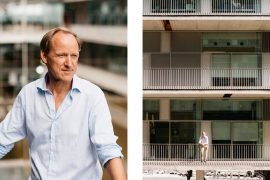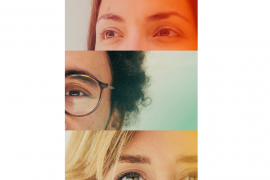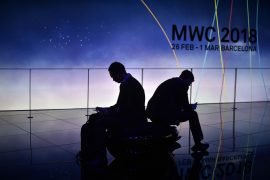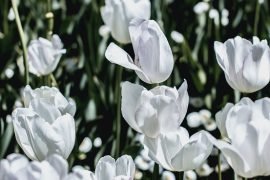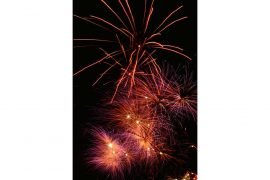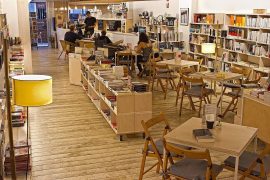[dropcap letter=”O”]
n its 16th edition, Loop has taken over the reins of a local and international movement, an intricate system involving artists, creators, galleries, curators and art collectors, which has left its mark on people’s minds and their analysis and insights into video art, both highly creative and powerfully striking.
 Loop has been developed along three main axes. The Festival, the Fair and the Talks. Most of the Festival venues will take place in a wide variety of sites from Barcelona to Hospitalet and Sant Cugat. These locations have provided the setting for display of talented local artists. Video art, documentaries, short films and experimental cinema are some of the proposals launched by both established and emerging talents under the motto “Production”.
Loop has been developed along three main axes. The Festival, the Fair and the Talks. Most of the Festival venues will take place in a wide variety of sites from Barcelona to Hospitalet and Sant Cugat. These locations have provided the setting for display of talented local artists. Video art, documentaries, short films and experimental cinema are some of the proposals launched by both established and emerging talents under the motto “Production”.
“How we build ourselves through images, what arises from this performing relationship generated and how this relationship relates to other disciplines”, has been part of the narrative behind the current edition of Loop, says Xavier Acarín, curator responsible for the Department of Communication of Loop.
Loop took place between 12 and 22 November 2018 in Barcelona. Its coming edition will take place in November 2019.
The proposals have addressed such issues as climate change, geopolitics, refugees, gender and many other cross-cultural issues. The Festival has been hosted at the flagship location of Reial Cercle Artístic with the production “Produit, Produit, Produït”, which displays the works of artists related to the city like Serafín Álvarez, Marion Balac, Paco Chanivet, Fito Conesa, Ariadna Guiteras, Mercedes Mangrané, Momu&Noes, Sol Prado, Gabriel Pericás, Mario Santamaría and Helena Vinent, curated by Carolina Ciuti, Loop’s artistic director.

Such spaces as Fundació Antoni Tàpies, with the Han Nefkens Foundation, displayed Erkan Özgen’s first individual exposition; the viewing of “Estado de Malestar” by María Ruido –winner of the Production Award– at the Santa Mónica Arts Centre and the same space has borne witness to the work by Núria Font, the most influential video dance creator at national level; the re-showing of the film “En la ciudad” (1976) thanks to Eugeni Bonet and José Miguel Gómez together with other artists from the Museum of History of Catalonia; video works by choreographer Merce Cunningham viewed at the Mies Van der Rohe Pavilion and a wide selection of sites including Fundación Joan Miró or Fundació Suñol between 70 spaces, 27 expositions and 15 activities for this festival’s edition, and the participation of as many as 238 artists.
Some of the expositions included in the Festival can still be visited online: loop-barcelona.com
“While the Festival shows the dynamism of the Barcelona artistic scene, the Fair shows the dynamism of video art internationally”, says Emilio Álvarez, Loop’s co-founder and co-director together with Carlos Durán. This year’s new edition of the Fair has been hosted at Hotel Almanac, a site which makes this year’s proposal a truly innovative one. Its three floors with their corresponding rooms play host to the talent of 42 artists from 26 countries who, represented by their galleries, showed their video creations from 1978 and 2018.
One more year, the committee made up of Haro Cumbusyan, Renee Drake, Joseé and Marc Gensollen and Isabelle Lemaître and presided over by Jean-Conrad Lemaître has selected the participating galleries. Among these artists, 20 female and 22 male artists coming from different parts of Europe, Asia, Africa, the USA and three Spanish artists (María Ruido, Núria Güell and Luis Patiño). Among the professional profile of the artists attending the Fair, there were about one hundred specialized collectors on this field. The Fair has registered as many as 4,500 official accreditations for the three days of the Festival.
Emilio Álvarez has shared some of the challenges posed by the video on account of its status in between art and cinema. On this issue, he claims that “it is seen in biennial festivals, museums or galleries, but not frequently seen in fairs because of its added difficulty of how to view and under what conditions videos can be viewed”. In this respect, he has substantiated its relevance in the context of a hotel: “The hotel shares the same features of a home and is acoustically controlled, even the lighting is under control. And it facilitates communication with the artist or the gallery”. The experience of viewing a video work in every room, sitting in a sofa or a bed and having the opportunity to ask the artists themselves or those responsible for the gallery about anything on the video work, turn this presentation format into one of the most interesting aspects of this mise-en-scene.
“Loop is consolidated as a web of agents collaborating, debating and sharing ideas, and managing artistic creation, particularly video creation”, says Carolina Ciuti, Loop’s artistic director.
During the Fair, the Loop Talks have been hosted simultaneously at Hotel Almanac. The Fair opened up with a keynote speech by Hans Ulrich Obrist, artistic director of London’s Serpentine Gallery and Patrizia Sandretto Re Rebaudengo, founder of Turin’s Fondazione Sandretto Re Rebaudengo.
The programme of lectures has tackled the issue of video as an increasingly complex production, which has shifted from being an individual to a collective production. The borderline between video and cinema, the support of local institutions to promote evolution and development as well as the role of international institutions on video creation have been some of the debated issues with the participation of 20 professionals from 16 different institutions.
Loop has awarded several prizes and recognition thanks to collaborating businesses and institutions that have generously supported the Fair. Likewise, Loop has facilitated a space to generate a platform that promotes thinking and video promotion in its current environment.
As regards the priciest piece in the Fair, this one has been by artist Derek Kreckler, represented by the German gallery Jarvis Dooner. Following that, a piece of work by Belgian artist Hans Op de Beeck estimated at 34,000 euros on display by Ron Mandos gallery from Amsterdam. At the other end of the spectrum, the most affordable piece of art has been that of artists Sander Breuer & Witte van Hulzen offered by Tegenboschvanvreden, also from Amsterdam. Every piece of video work has an average production of five units.


